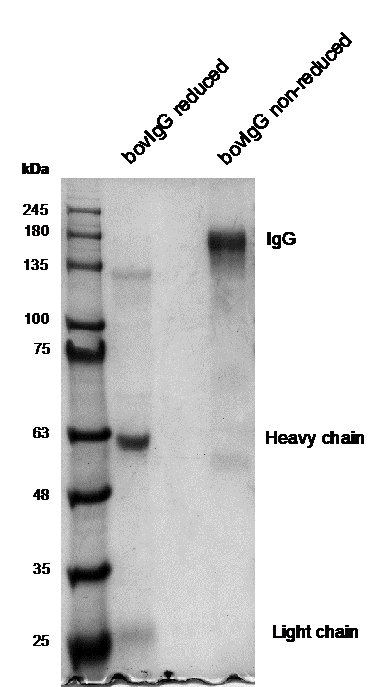Cat. #157771
3LL NRAS KO #63 cell line
Cat. #: 157771
Sub-type: Continuous
Unit size: 1x10^6 cells / vial
Availability: 3-5 days
Organism: Mouse
Tissue: Lung
Disease: Cancer
Model: Knock-Out
£575.00
This fee is applicable only for non-profit organisations. If you are a for-profit organisation or a researcher working on commercially-sponsored academic research, you will need to contact our licensing team for a commercial use license.
Contributor
Inventor: Julian Downward
Institute: The Francis Crick Institute
Primary Citation: Molina-Arcas et al. 2019. Sci Transl Med. 11(510). PMID: 31534020
Tool Details
*FOR RESEARCH USE ONLY (for other uses, please contact the licensing team)
- Name: 3LL NRAS KO #63 cell line
- Alternate name: 3LL deltaNRAS
- Cancer: Lung cancer
- Research fields: Cancer;Cell biology;Cell signaling and signal transduction
- Tool sub type: Continuous
- Parental cell: 3LL aka LL/2 (LLC1) likely origin - the authors have established (by DNA sequencing) that these cells are homozygous for the KRAS-G12C & NRAS-Q61H mutations which is not the case for the parent 3LL ATCC line
- Clone: 63
- Organism: Mouse
- Tissue: Lung
- Disease: Cancer
- Growth properties: Semi-adherent
- Model: Knock-Out
- Model description: NRAS KO using CRISPR/Cas9 to promote a stronger dependency on oncogenic G12C KRAS
- Crispr: Yes
- Conditional: No
- Description: Murine Lewis lung adenocarcinoma engineered cells represent a model for study of the effect of KRAS-G12C inhibitors on oncogenic cells. The cell line was established from 3LL cells by NRAS knocking out using CRISPR-Cas9 to promote a stronger dependency on oncogenic G12C KRAS. It was used in development of combination therapies to maximize the impact of G12C KRAS inhibitors in lung cancer
- Application: Development of combination therapies
- Production details: NRAS CRISPR/Cas knockout: To knock out NRAS, 3LL cells were transiently transfected with the pSpCas9(BB)-2A-GFP vector (PX458, Addgene) expressing a GFP expression cassette and with the gRNA 5’-gRNA-‘3 ACTGGACACAGCTGGACATG, PAM: ATG. GFP-positive cells were sorted using a MoFlo XDP sorter and single cell cloned manually. Clones were amplified and NRAS protein was quantified by Western blot
- Biosafety level: 1
- Additional notes: CRISPR edited 3LL cells.Cancer Research Technology Limited (trading research tools as Ximbio) has been granted a non-exclusive license to the CRISPR-Cas9 technology by ERS Genomics Ltd under the patent rights listed here.This license from ERS Genomics Ltd allows Ximbio to develop and commercialise CRISPR-Cas9 modified cell lines for research use only. Ximbio can provide these modified CRISPR-Cas9 cell lines to companies under a label...
Target Details
- Target: KRAS (V-Ki-ras2 Kirsten rat sarcoma viral oncogene homolog); also known as ras; p21B; K-Ras; K-ras; Kras2; Ki-ras; Kras-2; K-Ras 2; c-K-ras; c-Ki-ras
- Target background: The KRAS gene is an oncogene that encodes a small GTPase transductor protein called KRAS. KRAS is involved in the regulation of cell division as a result of its ability to relay external signals to the cell nucleus. Activating mutations in the KRAS gene impair the ability of the KRAS protein to switch between active and inactive states, leading to cell transformation and increased resistance to chemotherapy and biological therapies targeting epidermal growth factor receptors [PMID: 20617134]
Applications
- Application: Development of combination therapies
- Application notes: Development of combination therapies to maximize the impact of G12C KRAS inhibitors in lung cancer
Handling
- Format: Frozen
- Volume: 1 ml
- Growth medium: RPMI + 10% FCS + 1% Penicillin/Streptomycin
- Unit size: 1x10^6 cells / vial
- Shipping conditions: Dry ice
- Storage conditions: Liquid Nitrogen
- Cultured in antibiotics: Penicillin/Streptomycin
- Mycoplasma free: Yes
Related Tools
- Related tools: 3LL NRAS KO #86 cell line
References
- Molina-Arcas et al. 2019. Sci Transl Med. 11(510). PMID: 31534020



